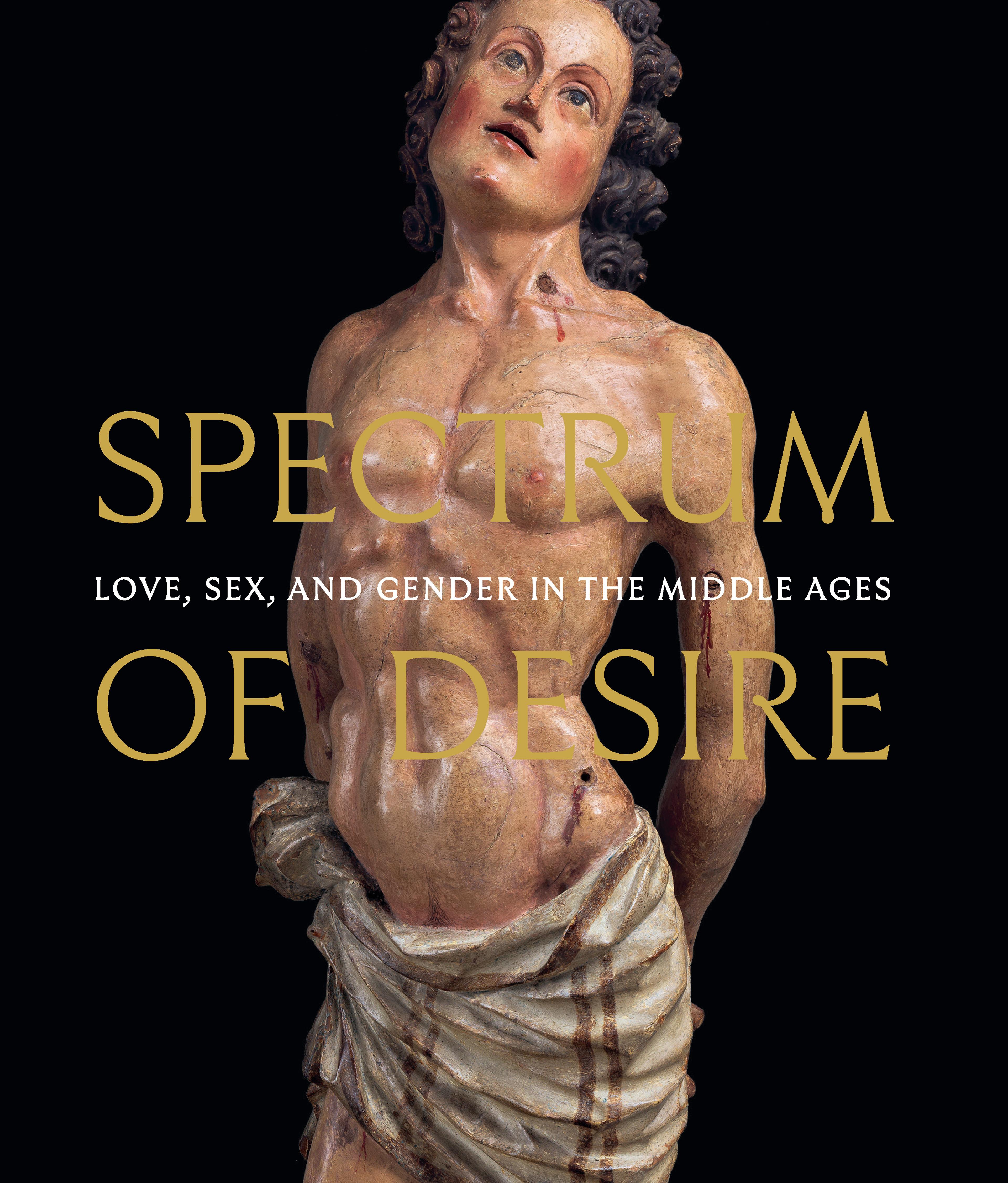Cover of a Writing Tablet
Both sides of this ivory reveal scenes of courtship taking place under trefoil arches. On one side (not shown), a man holding a bird of prey- a symbol of his status- has received a coronet from a woman and reciprocates by crowning her, thus signifying her victory in winning his love. On the other side (below, left) the lovers kneel in adoration before the god of love, who throws darts to seal their devotion. Inspired by numerous contemporary love poems, these scenes are part of the stages of love as defined in courtly literature such as the influential Roman de la Rose (ca. 1230-75).
Intended to cover writing tablets, such plaques were among the deluxe products of Paris during the fourteenth century and were possibly made on the rue de la Tabletterie, a name indicating their special use. Poems or messages would have been written on smooth sheets of ivory that had recessed areas filled with wax for the text. Perfect economy of technique and purity of style are clearly evident in these amorous images. In their elegance of form and gesture the courtly couples seem also to convey a moral and spiritual life that appears both mannered and artificial but is infused with joie de vivre.
Intended to cover writing tablets, such plaques were among the deluxe products of Paris during the fourteenth century and were possibly made on the rue de la Tabletterie, a name indicating their special use. Poems or messages would have been written on smooth sheets of ivory that had recessed areas filled with wax for the text. Perfect economy of technique and purity of style are clearly evident in these amorous images. In their elegance of form and gesture the courtly couples seem also to convey a moral and spiritual life that appears both mannered and artificial but is infused with joie de vivre.
Artwork Details
- Title:Cover of a Writing Tablet
- Date:ca. 1325–50
- Geography:Made in Paris, Île-de-France, France
- Culture:French
- Medium:Elephant ivory
- Dimensions:Overall: 3 11/16 x 2 5/16 x 5/16 in. (9.3 x 5.9 x 0.8 cm)
- Classification:Ivories-Elephant
- Credit Line:The Cloisters Collection, 2003
- Object Number:2003.131.3a, b
- Curatorial Department: Medieval Art and The Cloisters
More Artwork
Research Resources
The Met provides unparalleled resources for research and welcomes an international community of students and scholars. The Met's Open Access API is where creators and researchers can connect to the The Met collection. Open Access data and public domain images are available for unrestricted commercial and noncommercial use without permission or fee.
To request images under copyright and other restrictions, please use this Image Request form.
Feedback
We continue to research and examine historical and cultural context for objects in The Met collection. If you have comments or questions about this object record, please contact us using the form below. The Museum looks forward to receiving your comments.
